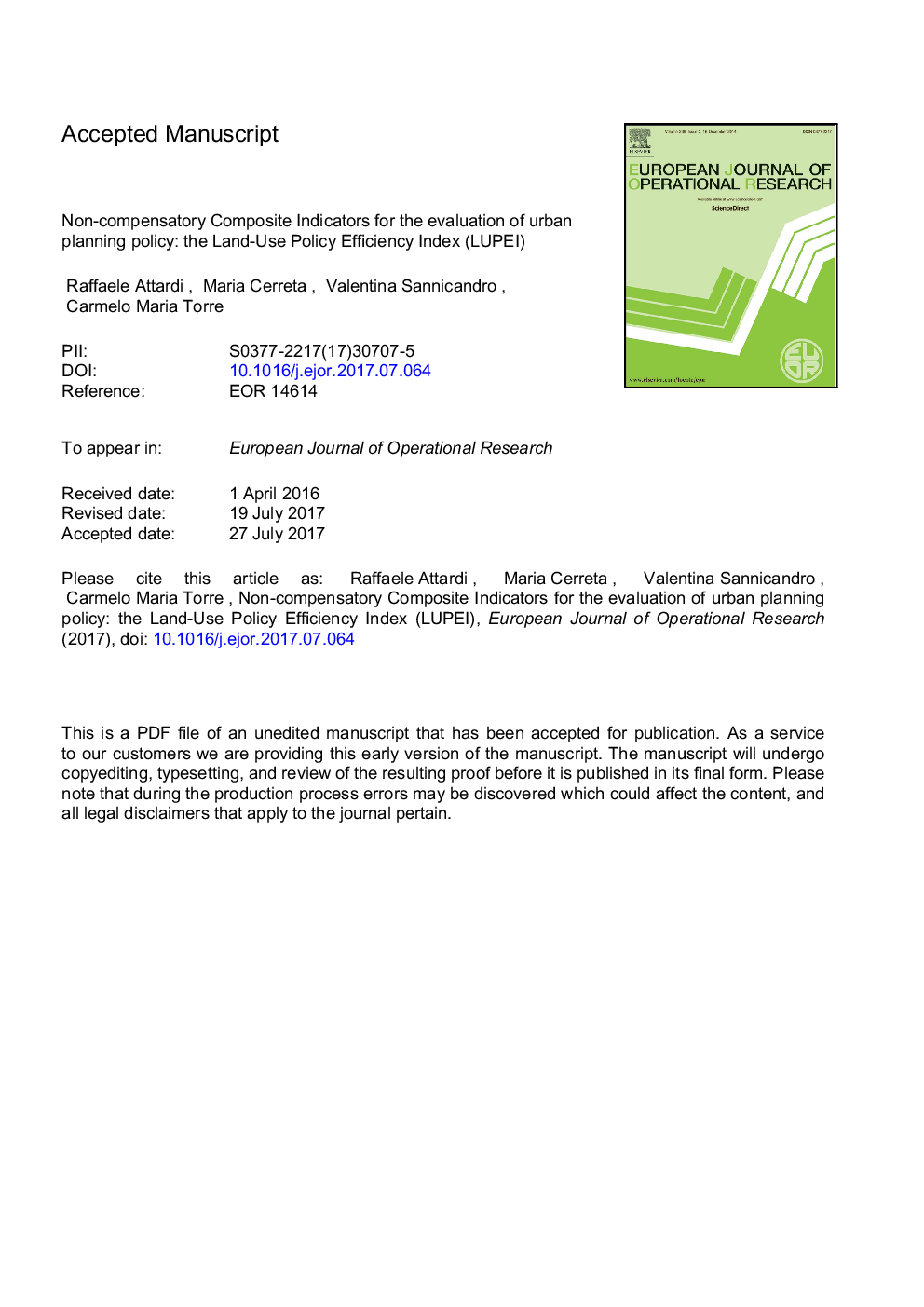| Article ID | Journal | Published Year | Pages | File Type |
|---|---|---|---|---|
| 4959412 | European Journal of Operational Research | 2018 | 37 Pages |
Abstract
In this research paper, we define and test an ELECTRE III-based approach to the construction of non-compensatory composite indicators; these indicators are used for the evaluation of environmental and social performances of urban and regional planning policies. We tested the methodology for the construction of the Land-Use Policy Efficiency Index (LUPEI) on the municipal scale applied to a sample of municipalities in the Apulia Region (Southern Italy). Based on the literature review concerning composite indicators, we found that linear aggregation rules are the most widely applied aggregation procedures for composite indicators. However, their applicability depends on a set of strong theoretical and operational conditions. If these conditions do not hold, then other aggregation and weighting procedures must be applied to construct the composite indicators. We tested the ELECTRE III via a fruitful interaction with three experts who were participating in a focus group. We found that composite indicators are powerful tools when it comes to the assessment of multidimensional planning issues. Since each sub-indicator provides different information and responds to different goals, rankings and assessment based on mono-indicator frameworks can lead to incomplete or even biased results that do not consider an integrated approach to land-use policy efficiency. Moreover, both experts and decision-makers appreciated the role of composite indicators in increasing knowledge and providing deeper insights into complex phenomena in the domains of urban and regional planning.
Related Topics
Physical Sciences and Engineering
Computer Science
Computer Science (General)
Authors
Raffaele Attardi, Maria Cerreta, Valentina Sannicandro, Carmelo Maria Torre,
